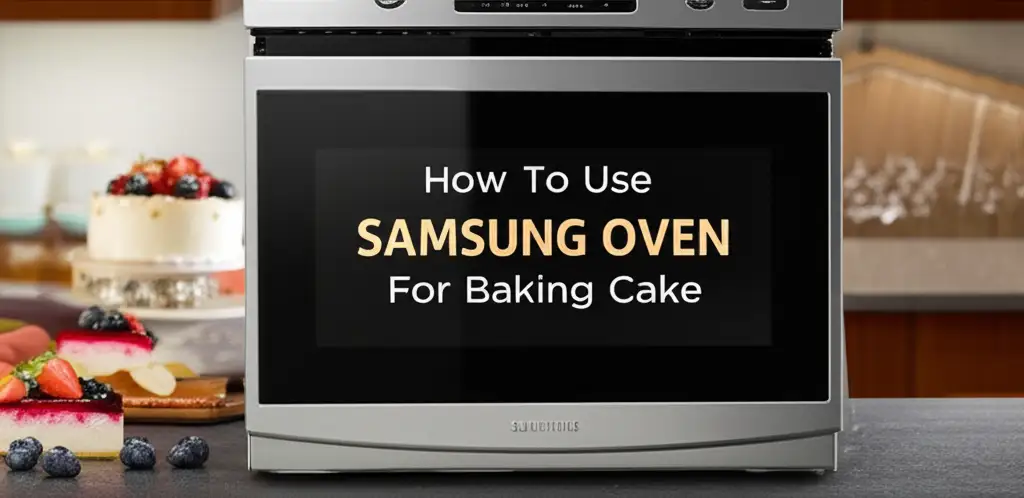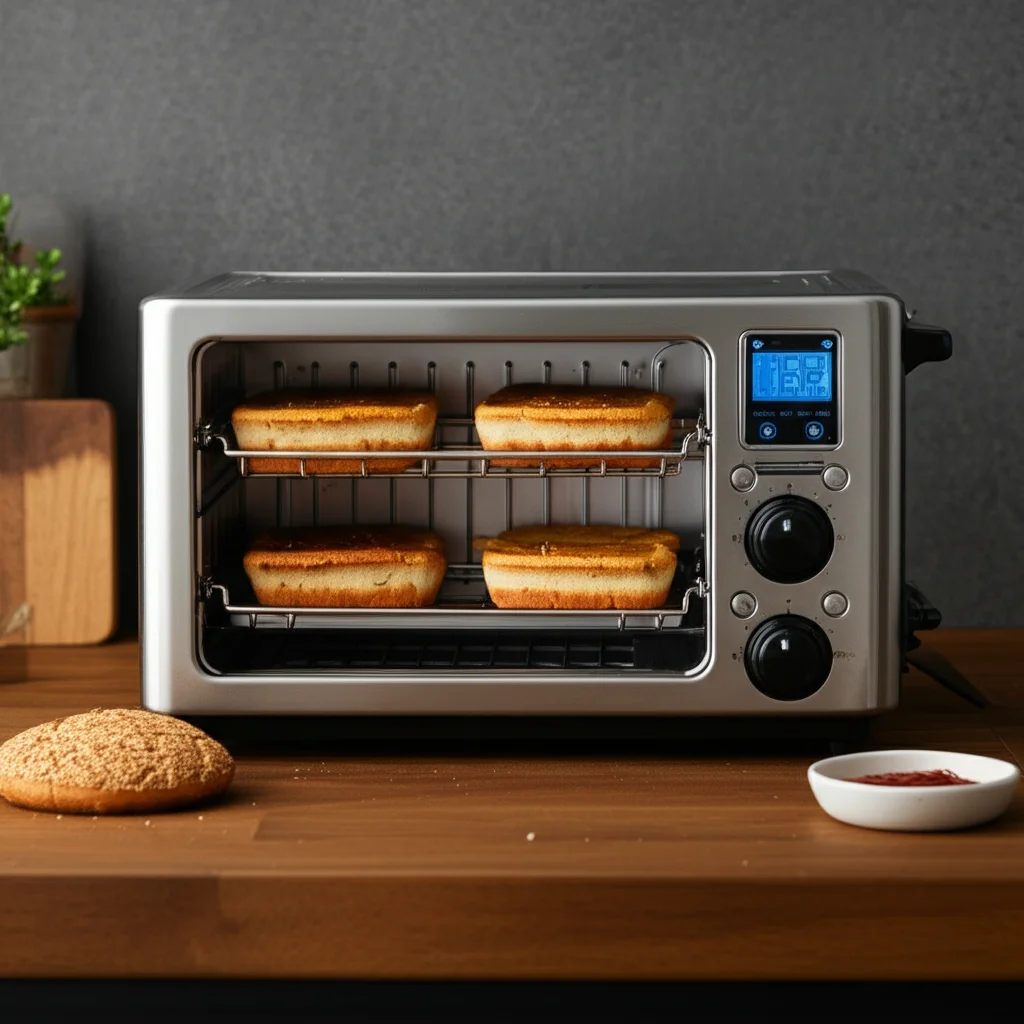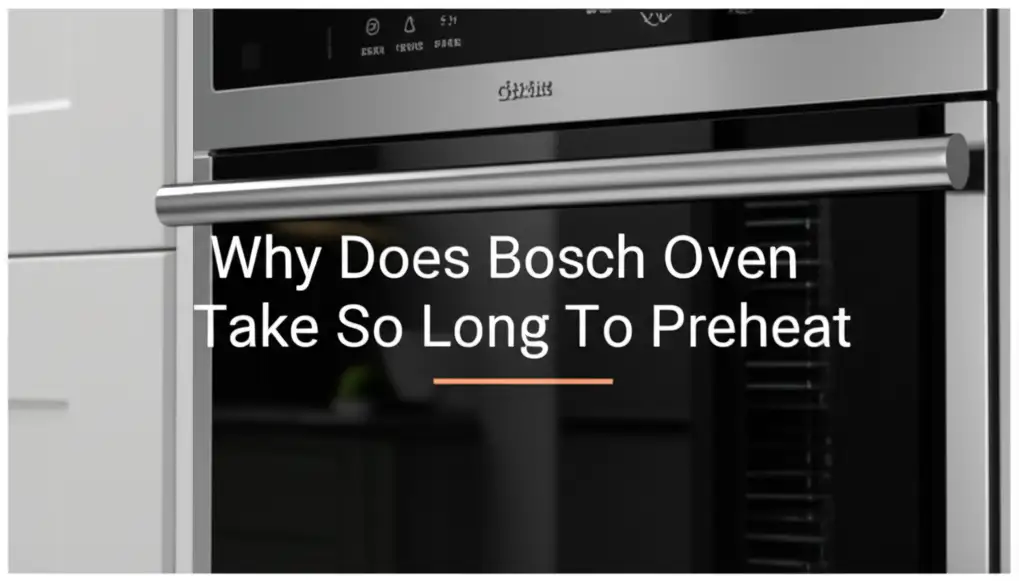· Todd Martin · Kitchen Appliances · 14 min read
How To Use Toaster Oven To Reheat Food

How To Use Toaster Oven To Reheat Food
Do you want to make your leftover meals taste fresh again? A toaster oven is an excellent tool for this task. It offers a convenient and effective way to warm up various foods. This method often surpasses microwave reheating for texture and flavor.
This guide will show you exactly how to use a toaster oven to reheat food. We will cover preparation, temperature settings, and specific tips for different food types. You will also learn about food safety and how to keep your appliance in good shape. By the end, you will confidently transform your leftovers into delicious dishes.
Takeaway
- Preheat your toaster oven: Always preheat for even heating.
- Use appropriate cookware: Metal or glass bakeware works best.
- Adjust temperature for food type: Lower heat (250-350°F) is often better to prevent drying.
- Cover certain foods: Use foil to retain moisture.
- Uncover for crispiness: Remove foil for the last few minutes if you want a crispy texture.
- Check internal temperature: Ensure food reaches a safe internal temperature (165°F or 74°C).
- Clean regularly: A clean toaster oven performs better and is safer.
Clear Answer to Main Query
You can use a toaster oven to reheat food by preheating it to an appropriate temperature (usually 250-375°F), placing food in oven-safe dishes, and heating until it reaches 165°F (74°C) internal temperature, often covering with foil to retain moisture and uncovering for crispiness.
Why Choose a Toaster Oven for Reheating Food?
Many people often grab the microwave for quick reheating. However, a toaster oven provides superior results for many types of food. It uses dry, radiant heat that helps restore crispiness. Microwaves, in contrast, often make food soggy.
Toaster ovens are also more energy-efficient than full-sized ovens for smaller portions. They heat up much faster and use less electricity. This makes them a smart choice for daily meals. Plus, they can make your leftovers taste as good as new. I find this especially true for pizza and roasted meats.
Another benefit is precise temperature control. You can set the exact temperature needed for different foods. This prevents overcooking or drying out your meals. This control is vital for maintaining food quality. A toaster oven brings back the original texture of many dishes.
Essential Steps Before Reheating Food
Proper preparation is key to successful reheating. First, choose the right bakeware. Use glass, ceramic, or metal dishes that fit well inside your toaster oven. Avoid plastic containers or anything that is not oven-safe.
Next, divide larger portions into smaller, even pieces. This ensures uniform heating. Thicker items like a chicken breast might need slicing. Smaller pieces will heat through more quickly and evenly. This step prevents cold spots.
Always preheat your toaster oven. Preheating creates a stable heating environment. This is like preheating a conventional oven. It helps food cook evenly from all sides. A cold oven will cook food slowly and unevenly. I always preheat for at least 5-10 minutes.
- Select Oven-Safe Cookware:
- Glass dishes
- Ceramic ramekins
- Metal baking sheets
- Aluminum foil (for covering or small wraps)
- Portion Food Correctly:
- Cut thick items into smaller, uniform pieces.
- Arrange food in a single layer if possible.
- Preheat the Toaster Oven:
- Set the desired temperature (typically 250-375°F).
- Allow 5-10 minutes for the oven to reach the set temperature.
- Preheating prevents uneven cooking and ensures a consistent result.
Optimal Temperatures and Times for Reheating
The ideal temperature and time for reheating food vary significantly. It depends on the type of food and its density. A general rule is to use a lower temperature than original cooking. This prevents drying out the food. Most foods reheat well between 250°F and 375°F.
For delicate items like pastries or bread, use a lower temperature, around 250-300°F. This warms them without burning. For denser foods like lasagna or roasted chicken, 350-375°F works well. Always keep an eye on your food. Heating times are estimates and depend on your specific toaster oven model and food quantity.
You should always aim for an internal temperature of 165°F (74°C) for safety. Use a food thermometer to check this. This ensures that any harmful bacteria are destroyed. This is a critical step for food safety. Reheating food correctly means both good taste and safe consumption.
General Temperature Guidelines
- Low Heat (250-300°F / 120-150°C): Best for delicate items, baked goods, and warming without crisping.
- Medium Heat (325-350°F / 160-175°C): Good for most casseroles, pasta, and roasted vegetables.
- Higher Heat (375-400°F / 190-205°C): Ideal for achieving crispiness, like pizza or fries. Use with caution to avoid burning.
Understanding Your Toaster Oven’s Settings
Many toaster ovens have different modes besides just “toast.” Common settings include “Bake,” “Reheat,” “Warm,” and sometimes “Air Fry.”
- Bake Mode: This is the most common setting for reheating. It provides consistent, even heat. Use this for most leftovers like casseroles or roasted meats.
- Reheat Mode: Some advanced toaster ovens have a dedicated “Reheat” setting. This mode is often optimized for gentle warming. Check your appliance manual for specific instructions on this mode.
- Warm Mode: This setting is for keeping food warm, not for actively reheating cold food. It works well if you need to hold food for a short time before serving.
- Air Fry Mode: If your toaster oven has an air fryer function, it is excellent for crisping. Use it for fries, chicken tenders, or anything you want extra crunchy. Learn how to use this feature with models like the KitchenAid toaster oven air fryer or Hamilton Beach toaster oven air fryer.
Understanding these settings helps you achieve the best results. I often switch between “Bake” and “Air Fry” depending on the desired texture.
Reheating Specific Food Types
Different foods require different approaches to reheating. Here are tips for common leftovers:
Reheating Pizza
Pizza is a classic leftover that excels in a toaster oven. Place slices directly on the wire rack or a baking sheet. Set the temperature to 375-400°F (190-205°C). Heat for 5-8 minutes, or until the cheese is bubbly and the crust is crispy. This method prevents sogginess. The result is a perfectly crisp crust and melted cheese. This is my favorite way to enjoy day-old pizza.
Reheating Fried Foods (Fries, Chicken Tenders)
For crispy fried foods, the toaster oven is unmatched. Arrange items in a single layer on a baking sheet. If your oven has an air fry mode, use it. Otherwise, set the temperature to 375-400°F (190-205°C). Reheat for 5-10 minutes, flipping halfway. This helps the exterior become wonderfully crunchy. I often use a perforated pan for extra air circulation.
Reheating Roasted Meats (Chicken, Pork, Beef)
Roasted meats tend to dry out if reheated incorrectly. Place the meat in an oven-safe dish. Add a tablespoon or two of broth or water to keep it moist. Cover the dish tightly with aluminum foil. Set the toaster oven to 300-325°F (150-160°C). Heat for 10-20 minutes, or until warmed through. Remove the foil for the last few minutes if you want a slightly crisped exterior.
Reheating Pasta and Casseroles
For pasta dishes like lasagna or baked ziti, cover the dish with foil. This keeps moisture in and prevents the top from drying or burning. Set the toaster oven to 325-350°F (160-175°C). Heat for 15-25 minutes, depending on the portion size. For casseroles, similar rules apply. Check the center to ensure it is hot. A small splash of water or broth can also revive dried-out pasta.
Reheating Baked Goods (Muffins, Bread, Pastries)
Baked goods warm up beautifully. Place items directly on the rack or a small baking sheet. Set the toaster oven to a low temperature, around 250-275°F (120-135°C). Reheat for 5-10 minutes. This brings back softness without over-browning. For crusty bread, a slightly higher temperature for a shorter time might work. You can also learn how to toast bread in a toaster oven for a fresh experience.
Reheating Vegetables
Roasted or steamed vegetables reheat well in a toaster oven. Spread them in a single layer on a baking sheet. Set the temperature to 350°F (175°C). Heat for 5-10 minutes, stirring occasionally. This helps them retain some crispness. Avoid overcrowding the pan.
Food Safety and Best Practices for Reheating
Food safety is paramount when reheating leftovers. Always ensure food reaches an internal temperature of 165°F (74°C). This temperature effectively kills most harmful bacteria. Use a meat thermometer to confirm. Insert it into the thickest part of the food.
Avoid reheating food multiple times. Each reheating cycle can reduce food quality and increase bacterial risk. It is best to reheat food only once. If you are unsure about food freshness, it is better to discard it. Trust your senses: if it smells off or looks strange, throw it out.
Store leftovers promptly and properly. Refrigerate food within two hours of cooking. Use shallow containers to cool food faster. This minimizes the time food spends in the “danger zone” (40-140°F / 4-60°C). The toaster oven is a great tool, but safe handling starts long before reheating.
- Always Check Internal Temperature:
- Use a food thermometer.
- Target 165°F (74°C) for all reheated foods.
- Insert the thermometer into the thickest part of the food.
- Reheat Only Once:
- Avoid multiple reheating cycles.
- This preserves taste and minimizes bacterial growth.
- Proper Storage is Key:
- Refrigerate leftovers within two hours of cooking.
- Store in airtight, shallow containers for quick cooling.
- Discard food left at room temperature for too long.
- Do Not Overcrowd:
- Place food in a single layer for even heating.
- Overcrowding leads to unevenly warmed food.
Maintenance Tips for Your Toaster Oven
Keeping your toaster oven clean is important for performance and hygiene. Food spills and grease can build up. This can lead to smoke or strange odors during use. Regular cleaning also ensures your appliance runs efficiently.
After each use, wipe down the interior and exterior. Remove crumbs from the crumb tray. For more thorough cleaning, follow specific instructions for your model. For instance, cleaning a Black+Decker toaster oven might involve different steps than a Cuisinart. There are general guides on how to clean a toaster oven that can help.
A clean heating element ensures consistent heat. Dirty elements might lead to uneven reheating. This also helps prolong the life of your appliance. I clean my toaster oven often, especially after cooking greasy foods. It makes a big difference.
- Daily Wipe-Down:
- Wipe spills from the interior and exterior after each use.
- Empty and clean the crumb tray regularly to prevent buildup.
- Deep Cleaning:
- Follow manufacturer’s instructions for deep cleaning.
- Address baked-on food and grease.
- Focus on the racks, walls, and glass door. For cleaning the glass, you can refer to tips on how to clean toaster oven glass.
- Check for Residue:
- Ensure heating elements are clear of food particles.
- Clean any residue that could cause smoke or odors.
- Proper Placement:
- Ensure your toaster oven has proper ventilation.
- Do not place it on top of other heat-producing appliances, like a microwave, without checking guidelines. (You can learn more about can you put toaster oven on top of microwave). This helps prevent overheating.
Troubleshooting Common Reheating Issues
Even with proper steps, you might encounter issues. Knowing how to troubleshoot helps. Common problems include uneven heating, food drying out, or taking too long to heat.
If your food heats unevenly, check if you preheated the oven enough. Also, ensure you did not overcrowd the baking sheet. Spreading food in a single layer improves heat distribution. Rotating the pan halfway through can also help. Sometimes, the issue is with the appliance itself, such as why is my toaster oven not heating up.
If food dries out, you are likely using too high a temperature or not covering it. Try lowering the temperature by 25-50 degrees. Cover with aluminum foil, especially for meats and casseroles. Only remove the foil for the last few minutes if you want a crispy finish. Adding a small amount of liquid, like broth or water, can also help.
If reheating takes too long, ensure your oven is truly preheated. Check the thermostat setting. Some toaster ovens might take longer to reach the set temperature. Also, ensure the food portions are not too large or too cold from the refrigerator. You might need to adjust the time based on how cold the food is.
- Uneven Heating:
- Ensure proper preheating.
- Do not overcrowd the baking sheet; use a single layer.
- Rotate the pan halfway through the cooking time.
- Food Drying Out:
- Reduce the temperature.
- Cover the food tightly with aluminum foil.
- Add a small amount of liquid (broth or water) to the dish.
- Reheating Takes Too Long:
- Verify the toaster oven is fully preheated.
- Check if the thermostat setting is correct.
- Consider the initial temperature and thickness of the food.
Advanced Tips for Perfect Leftovers
Beyond the basics, a few advanced techniques can elevate your reheated meals. These tips focus on optimizing texture and flavor. They help achieve restaurant-quality results at home.
Consider adding a little moisture back into certain dishes. For instance, sprinkle a few drops of water on old bread before reheating. This creates steam inside the oven. The steam helps soften the bread without making it soggy. For mashed potatoes, a splash of milk or butter works wonders.
Experiment with different rack positions. Most toaster ovens have multiple rack slots. Placing food on the lower rack provides more bottom heat. The upper rack provides more top browning. This allows you to customize the heat distribution. For example, use a lower rack for casseroles and an upper rack for crisping pizza.
Finally, think about using an oven-safe thermometer inside your toaster oven. The built-in thermostat can sometimes be inaccurate. A separate thermometer gives you a precise reading of the actual temperature. This ensures more consistent and reliable results.
- Reintroduce Moisture:
- Sprinkle water on dry items like bread.
- Add a small amount of broth or water to meats and pasta.
- Use a pat of butter for vegetables or starches.
- Utilize Rack Positions:
- Lower rack for baking and thorough heating.
- Upper rack for browning and crisping.
- Middle rack for general reheating.
- Monitor Temperature Accuracy:
- Use an independent oven thermometer to verify the toaster oven’s temperature.
- This ensures precise cooking and avoids over or under-heating.
- Consider Air Fry Baskets:
- If your toaster oven has an air fryer function, use an air fry basket.
- This promotes air circulation, leading to crispier results for fried foods.
FAQ Section
Q1: Can I reheat all types of food in a toaster oven?
Most foods reheat well in a toaster oven. It excels at making items crispy, like pizza and fried foods. Items with high moisture content, such as soups or stews, are better reheated on a stovetop or in a microwave. Avoid items that could make a mess or splatter excessively inside the oven.
Q2: Is it safe to use aluminum foil in a toaster oven?
Yes, it is generally safe to use aluminum foil in a toaster oven. Ensure it does not touch the heating elements, which can cause arcing or fire. Use it to cover food or line baking sheets. Avoid lining the crumb tray with foil, as it can trap heat and damage the appliance.
Q3: How do I prevent food from drying out when reheating?
To prevent food from drying out, cover it tightly with aluminum foil. For meats or casseroles, add a tablespoon or two of liquid like broth or water. Reheat at a lower temperature (e.g., 275-325°F) for a longer period. This gentle heat retains moisture more effectively.
Q4: Can I put a plate directly into the toaster oven for reheating?
You can put a plate directly into the toaster oven only if it is oven-safe. Check the plate’s bottom for an “oven-safe” symbol or temperature rating. Many dinner plates are not designed for oven heat and can crack or shatter. Use glass, ceramic, or metal baking dishes instead for safety.
Q5: What is the ideal temperature for reheating leftovers?
The ideal temperature for reheating most leftovers is between 250°F and 375°F (120-190°C). Use lower temperatures for delicate items and higher temperatures for crisping. Always aim for an internal food temperature of 165°F (74°C) for food safety. Adjust based on food type and desired texture.
Conclusion
Using your toaster oven to reheat food transforms your leftovers. It brings back that fresh-cooked taste and texture that microwaves often miss. You have learned the essential steps, from proper preparation and temperature settings to specific tips for different food types. This knowledge ensures your meals are both delicious and safe.
Remember to preheat your oven, select the right cookware, and monitor internal food temperatures for safety. With a little practice, your toaster oven will become your go-to appliance for reheating. Enjoy perfectly warmed meals every time. Experiment with the settings and discover how enjoyable reheating can be!





